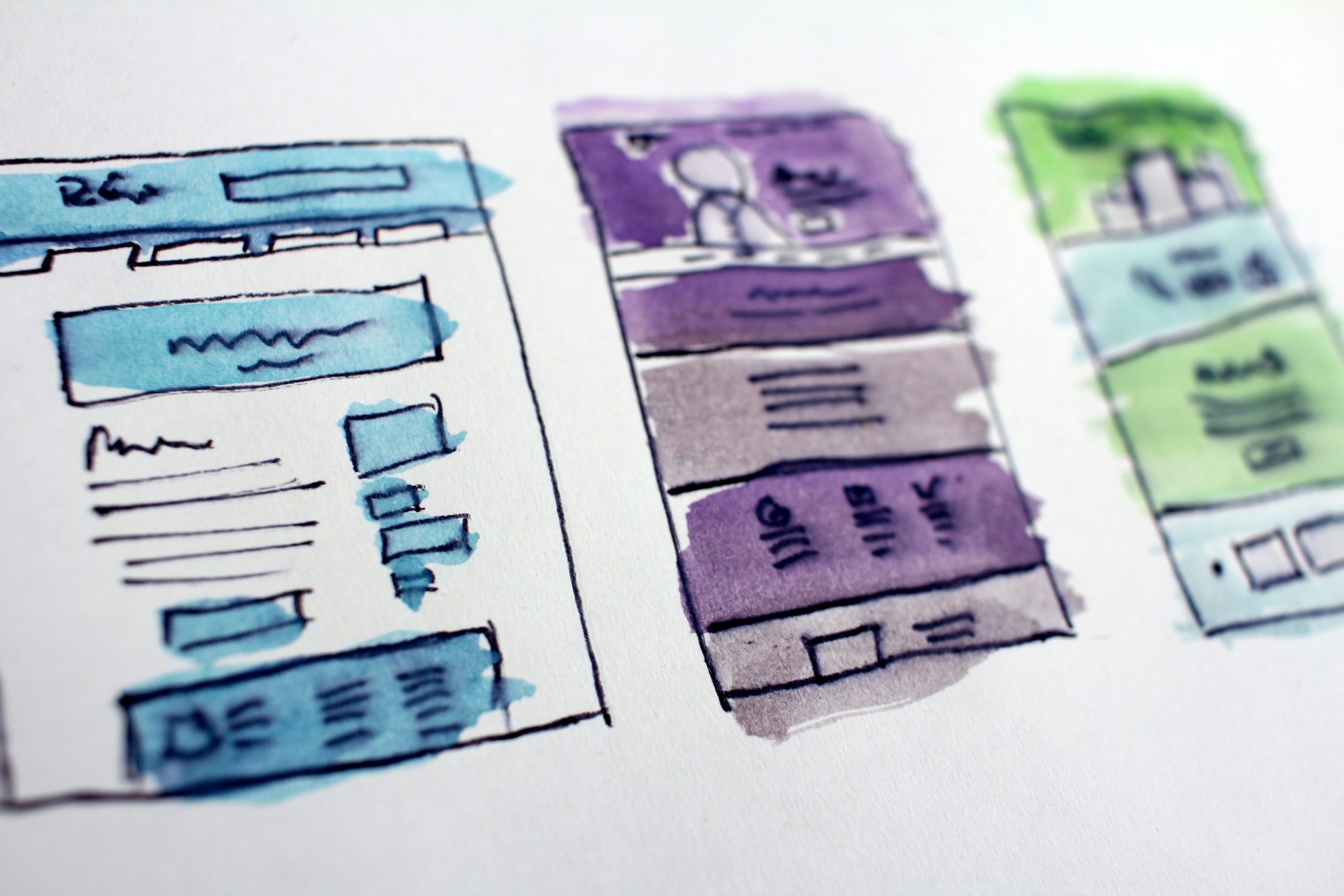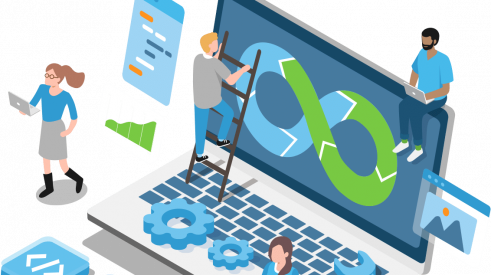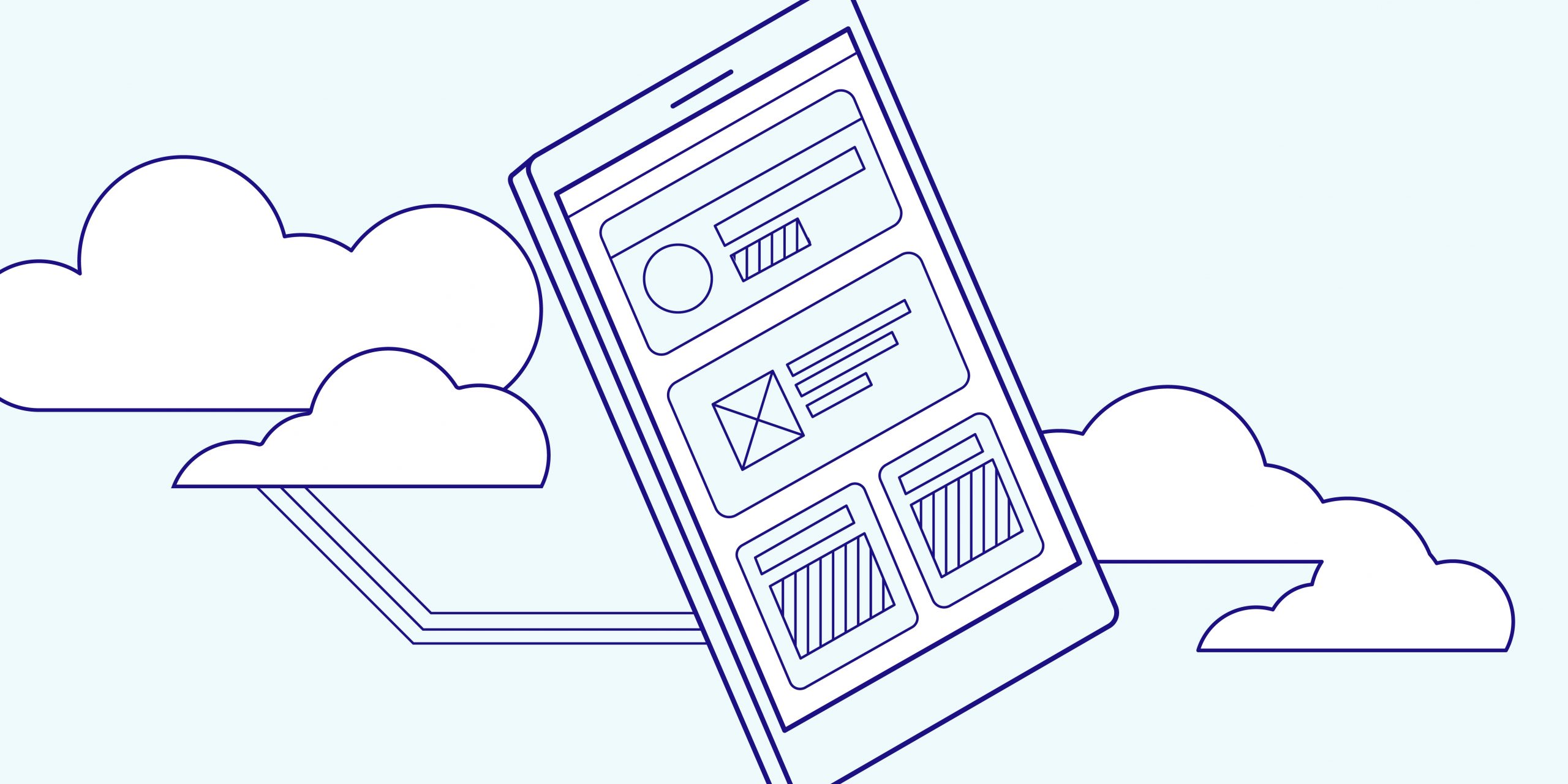In the past, it was all about selling more through digital. Now, companies like yours are asking a question that is no longer solely driven by capitalistic tendencies: how do I use technology to deliver value to my users? The answer is through a high-quality digital product. Luckily, creating one is not the impossible task people might make it out to be. Let’s define what we’re talking about and then tackle the three steps that you’ll take on this great digital adventure.
A simple definition of a digital product
A digital product is an online (dematerialized) product or service that serves a specific audience. There are generally three types of audiences: end consumers (B2C), businesses (B2B) or a mix of both. We’ll refer to your employees as your internal audience. In slightly more academic language, a digital product is a code-based asset that delivers an interactive value proposition to the end user. Digital products can take many forms. Here are a few examples:
- Web applications
- Custom software
- Mobile applications
- Transactional platforms
- Connected objects
Step one: Ideation
During this stage, you’ll be asked to describe your overall vision. What motivated you to create a product? Think of your vision as the north star guiding all of the team’s efforts. It’s a point of reference. During this phase, you’ll focus on the potential of the digital product and your long-term goals. At Libéo, we use a collaborative approach that operates through Design Thinking workshops. Of course, the ideation process varies greatly from one client to another, but one thing is certain—we’ll review the needs of your customers and/or users and we’ll even interview you to obtain as many relevant details as possible. Design Thinking workshops have three primary objectives:
- Understand the user’s point of view
- Shine a light on opportunities
- Find the sweet spot
Afterwards, you’ll be asked to answer several basic questions, such as:
- What are the strengths and weaknesses of my competitors?
- What are the latest market trends?
- What is the profile of my ideal user?
That will enable you to come up with an effective value proposition or, in other words, a promise to your users. Why should they trust you? What do they have to gain? Shopify expresses its value to its potential customers by stressing the fact that its e-commerce platform is scalable as its business grows and available anywhere in the world at anytime. It promises one unified platform to rule them all. Internally, an example of a value proposition could simply be to make your employees’ lives easier by speeding up certain processes, such as placing orders online.
Step two: Prototyping and MVP
Once the ideation stage is complete, you’ll know whether your digital product is viable. If it is, it’s time to think about what form it will take: its design. A prototype can be used to validate certain hypotheses about your product. The project team will then analyze the overall concept and provide feedback. At this stage, the product has no true functionalities and often takes the form of an interactive interface, providing the first opportunity to test UI/UX elements. The prototyping phase is useful because it’s very quick and requires minimal investment in terms of time and money. At the end of this step, you’ll have something called a minimum viable product (MVP), which is the first version of your new product. It will have functionalities that can be tested by users, then analyzed by the development team. The MVP is a way to collect a ton of useful data and learn in an applied context. This data will be useful when iterating on the functionalities that worked well or less well. In addition, using Agile methodology means that we can make adjustments along the way without any problems. If necessary, we can conduct other development sprints to get crystal clear on the required functionalities before the digital product is released.
Step three: Deployment and support
The third and final step of developing a digital product is the most exciting—deployment. During this phase, your target audience can finally get their hands on your product and test all of its functionalities. Beforehand, you’ll have agreed to a deployment strategy if the product is intended for internal use. A well-structured introduction will make it easier for your team to adopt the product. It’s best to announce your plans in advance, explain the purpose of the product (why you’re adopting it), choose between a quick or gradual deployment, provide training and encourage discussion. If you’re planning on selling your digital product or offering it to a user you defined in the ideation stage, you’ll need to develop a pre-launch marketing strategy. There are many ways to build interest in your digital product: a landing page, an email or social media marketing campaign, using influencers, offering a preview version to get valuable reviews, etc. Remember that you only get one chance to make a good impression! However, your project isn’t over once the digital product is deployed. Ongoing support and development are of major importance and will make sure your online solution has a long lifespan. From fixing bugs to adding or changing functionalities, every effort must be made to encourage growth and, more importantly, to meet the changing needs of your users. You’ll want to analyze their comments and make adjustments as needed. A digital product is never perfect, but that doesn’t mean you can’t achieve a high level of quality. Data analysis combined with user testing has proven to be very effective.
Good to know: The different approaches to developing a digital product
The methodology you choose to work with will have an impact on the development of your digital product. Although you don’t need to know everything about this more technical aspect of development, it’s useful to know the main ways it can be done.
The Waterfall model
The classic waterfall model is a linear or sequential approach to software development that divides a project into 7 to 9 predefined phases. Each phase is unique and phases do not overlap. The term waterfall is used because the model systematically flows from one phase to the next in a descending manner. This approach limits risks and is very useful if the digital product schedule can’t be changed. The waterfall model offers more predictable results. Here are its steps:
- Requirements
- Analysis
- Design
- Implementation
- Testing
- Deployment
- Maintenance
The Agile model
The Agile model, which is what we use at Libéo, is based on iterative and incremental processes during development. This model revolves around user satisfaction and is also defined by its ability to adapt and change shape. The approach is especially valuable for delivering high-quality digital products that truly meet the needs of your users. Here are its steps:
- Planning
- Analysis
- Design
- Implementation
- Testing and integration
- Maintenance
The Lean model
The Lean model is interesting as it encourages you to ask yourself a basic question about your digital product: should you really develop it? The Lean approach ensures that the final product is relevant to your target audience, while aiming to optimize development time by following a repeatable process. It requires close collaboration among specialists who will deliver a digital product quickly and efficiently. Here are its steps:
- Analysis
- Planning
- Design
- Development
- Testing
That’s a wrap!
The process of developing a digital product can vary greatly depending on product complexity and the approach selected. Each project is unique, which requires a personalized and tailored approach. If you’re thinking of moving forward with your idea, our team can help you mitigate the risks that come with a complex digital product.




